The Once Great Port of New York
by Andrew Boyd
Today, a gritty beginning. The University of Houston's College of Engineering presents this series about the machines that make our civilization run, and the people whose ingenuity created them.
England has London. France has Paris. And in the eyes of the world, the U.S. has New York. But what brought the Big Apple to such glittery prominence on the world stage?
As any realtor will tell you, there were three main reasons: location, location, and location. New York is situated in a large, natural harbor on the east coast. Within the harbor are miles and miles of protected coastline. For most of history the only economical way to ship goods over long distances was on the water. New York was connected via the Hudson River to upstate New York, and from there to the nation's interior via the Erie Canal. In short, the city was perfectly situated as a gateway for goods flowing between Europe and much of the U.S.
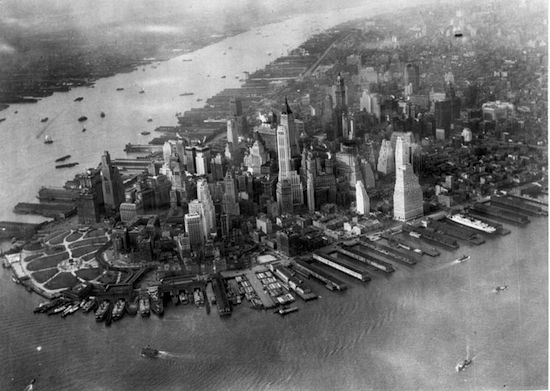
Aerial view of the tip of Manhattan, New York, United States ca. 1931. (U.S. National Archives/Wikipedia)
By 1900 New York was the busiest port in the U.S., and by some estimates the busiest in the world. Piers weren't tucked away in some remote location, but stretched out along the shores of lower Manhattan and Brooklyn. Manufacturers crowded near the shoreline to be near shippers. It was a crazy, energetic time. But even as New York was experiencing unrivaled commercial success, the confluence of factors that allowed it to thrive were about to turn on the city.
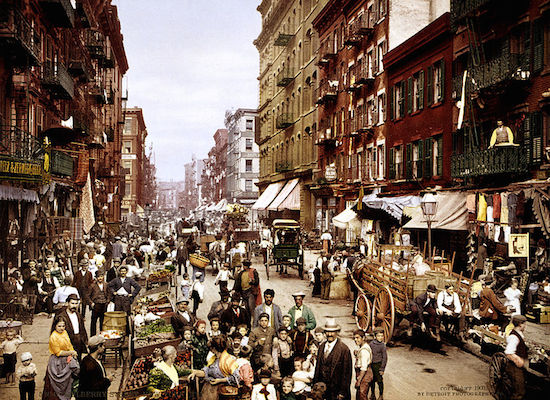
Mulberry Street, New York City (Detroit Publishing Co./Wikipedia)
The Hudson River, once a commercial lifeline, was a barrier for newly arriving trains from the west. Train cars had to be placed on barges and floated to the port. The appearance of trucks didn't make things any better, as they clogged the streets and tunnels of the city.
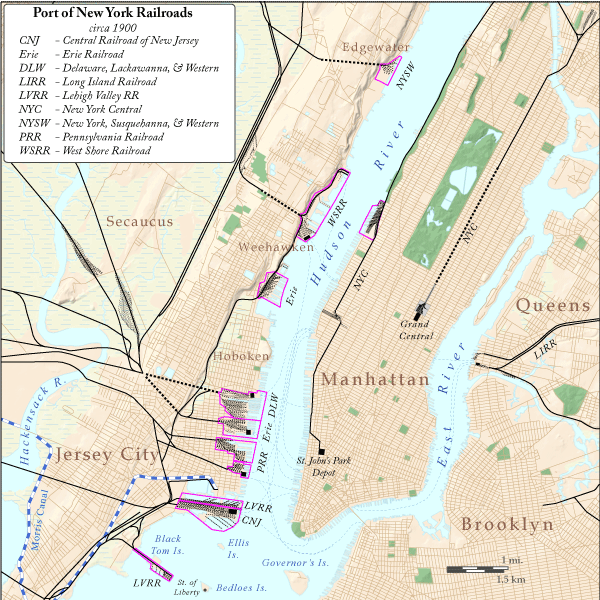
New York City Railroads circa 1900 (James R. Irwin/Wikipedia)
Meanwhile, on the other side of the Hudson, resourceful heads were eyeing the scene carefully. Improvements to the dilapidated and little used New Jersey ports began shortly after the Second World War. But it was the year 1955 that really turned the tide, when the governor of New Jersey announced the development of a new port on 450 acres of tidal marsh. Modern, with ready access to rail lines and the New Jersey Turnpike, the new port came as a jolt to New Yorkers. The city fought back, spending vast sums to remain competitive. But as surely as its location once nurtured New York, it ultimately brought an end to its thriving ports.
Adding insult to injury, the New Jersey port embraced a new twist that had only shown up in the late fifties — container shipping. New Jersey went on to become home to the busiest container port in the world until 1985, and it remains home to the busiest container port on the east coast.
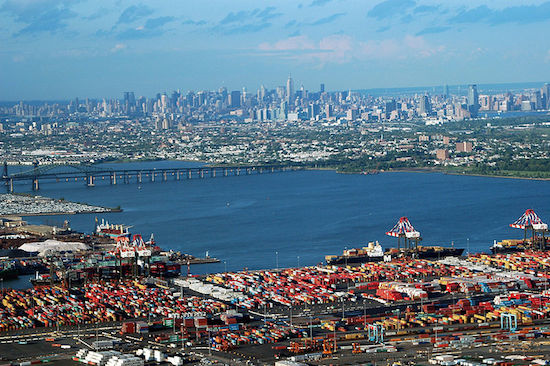
The island of Manhattan, Jersey City, Newark Bay, and areas of the New York / New Jersey Port seen from aboard a plane in July, 2005. (Flickr/Wikipedia)
And New York? With the loss of its ports, one in four residents of Manhattan and Brooklyn packed up and left, part of a long downward spiral that took the city to within a hair's breadth of bankruptcy in the mid 1970s. But not to worry. As we've seen with the rise of the new World Trade Center Complex, New Yorkers have a determination that keeps them doggedly bouncing back.
[audio: New York New York, Debbie Harry/Moby]
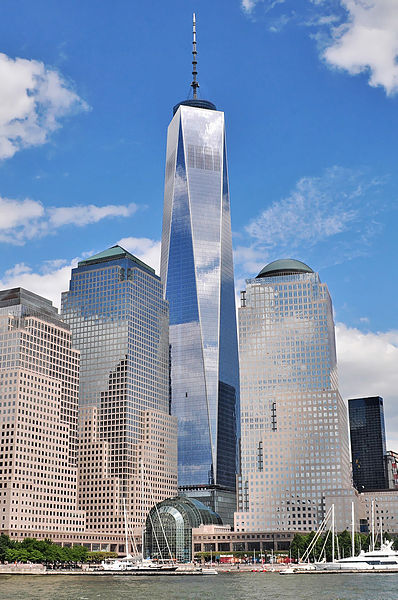
One World Trade Center as seen from the Hudson River (Wikipedia)
I'm Andy Boyd at the University of Houston, where we're interested in the way inventive minds work.
(Theme music)
Notes and references:
The "resourceful heads ... eyeing the scene carefully" from New Jersey were actually those of the Port of New York Authority, a combined agency of the states of New York and New Jersey, later renamed the Port Authority of New York and New Jersey.
M. Levinson. The Box. Princeton, New Jersey: Princeton University Press, 2006. See chapter 5, The Battle for New York's Port.
E. Lipton. New York Port Hums Again, With Asian Trade. New York Times, November 22, 2004. See also: http://www.nytimes.com/2004/11/22/nyregion/22port.html?_r=1&. Accessed May 13, 2014.
Port Newark — Elizabeth Marine Terminal. From the Wikipedia website: https://en.wikipedia.org/wiki/Port_Newark-Elizabeth_Marine_Terminal. Accessed May 13, 2014.
For related episodes, see 2094, 2328, and 2615.
This episode first aired on May 15, 2014.